Anjana: Mother of Hanuman
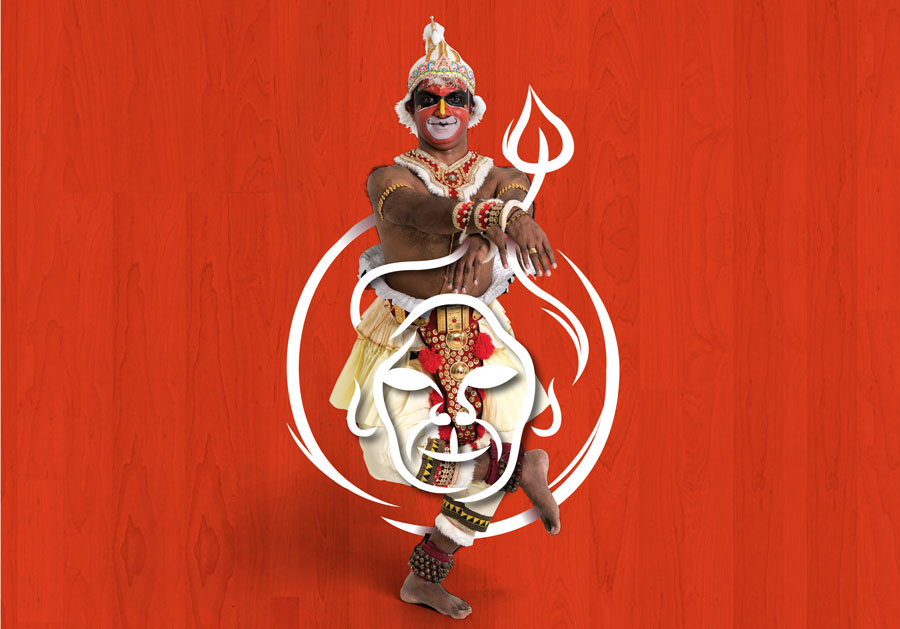
An insight from the concept of Anjaneyam: Hanuman’s Ramayana Hanuman was born to the humanoid creatures called the vanaras. His mother Anjana was an Apsara named Puñjikastalā, who was born on earth as a vanara princess due to a curse from sage Durvasa, and she married Kesari, a vanara chief. She was redeemed from this curse on her giving birth to a son. The Valmiki Ramayana states that his father Kesari was the son of Brihaspati and that Kesari also fought on Rama’s side in the war against Ravana. Anjana and Kesari performed intense prayers to Shiva to get a child. Pleased with their devotion, Shiva granted them the boon they sought. Hanuman, in another interpretation, is the incarnation or reflection of Shiva himself. Hanuman is often called the son of the deity Vayu; several different legends account for the Vayu’s role in Hanuman’s birth. One story mentioned in Eknath’s Bhavartha Ramayana (16th century CE) states that when Anjana was worshiping Shiva, the King Dasharatha of Ayodhya was also performing the ritual of Putrakama yagna in order to have children. As a result, he received some sacred pudding (payasam) to be shared by his three wives, leading to the births of Rama, Lakshmana, Bharata, and Shatrughna. King Dasaratha gave the pudding to Kausalya and Kaikeyi. However as Dasaratha was about to hand over the pudding to Queen Sumithra, a bird snatched the payasam and flew away from there. Both Kausalya and Kaikeyi immediately gave a portion of their own pudding to Queen Sumithra, because of which Queen Sumithra gave birth to twins – Lakshmana and Shatrugana. Queen Kausalya gave birth to Ram, the hero of Ramayana and Queen Kaikeyi gave birth to Bharat. The bird which stole the payasam also has a story. The bird was actually an Apsara – Suvarchala. Suvarchala was very impulsive and often acted without thinking. Once because of her impulsive behaviour, Lord Brahma got very angry with her and cursed her that she would become a bird. Suvarchala promised Lord Brahma that she had repented her ways. Lord Brahma said that his words could not be taken back and that Suvarchala would have to go to earth and stay as a bird. Lord Brahma however modified the curse and said that Suvarchala was to be freed from her curse if she touched the pudding given by Lord Agni to Dasaratha. Eager to have her curse lifted, Suvarchala snatched the pudding from Queen Sumitra. Immediately she changed form and became an apsara. The payasam fell from the bird’s claws and was falling to the ground when Vayu, the Wind God following the orders of Lord Shiva, blew the pudding softly without spilling it to the outstretched hands of Anjana, who consumed it. Hanuman was born to her as a result and was named “Anjaneyan, the son of Anjana. Birthplace of HanumanThere are multiple places in India are claimed as the birthplace of Hanuman 1) According to one theory, Hanuman was born on Anjaneya Hill, in Hampi, Karnataka.This is located near the Risyamukha mountain on the banks of the Pampa, where Monkey King Sugreeva and Lord Rama are said to have met in Ramayana Legend. 2) Anjan, a small village about 18 km away from Gumla, Bihar , houses ANJAN DHAM , which is said to be the birthplace of Lord Hanuman. The name of the village is derived from the name of the goddess Maa Anjani, the mother of Hanuman. Aanjani Cave, 4 km from the village, is believed to be the place where Mata Aanjani once lived. Many objects and items of archaeological importance obtained from this site are now held at the Patna Museum. 3) The Anjaneri (or Anjneri) mountain, located 8 km from Trimbakeshwar in the Nasik district, is also claimed as the birthplace of Hanuman. One has to trek around 6 kms up from the base of the trek to reach the birth place. 4) A cave in a hill near Gokarna, one of the oldest temple towns of India, is also said to be the birthplace of Hanuman. This cave has had a Hanuman temple for a long time. Gokarna, situated in west coast of Karnataka, is known for Atma Linga of Shiva, installed by Ganapathi to save it from the hands of Ravana long before Ramayana days.
Anjaneyam: Hanuman’s Ramayana
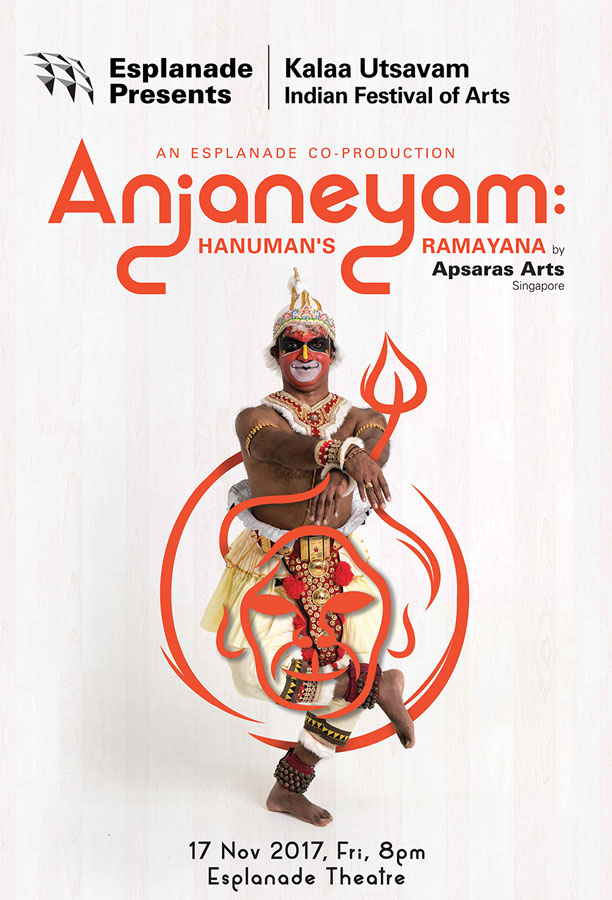
Synopsis For centuries, the ancient Indian epic The Ramayana has captured the imagination of Asia with its universal themes of righteousness, love, loyalty and frailty. One of the most beloved characters in the story is the monkey god Hanuman, who plays a crucial role in Prince Rama’s quest to rescue his wife, Sita, from the 10-headed demon king Ravana. Follow the life and adventures of Hanuman, from the time of his birth, to his meeting with the exiled Prince Rama, and to the heroic battle against Ravana and his forces. Watch the story unfold through dance and music, and bear witness to the birth of The Ramayanawhen Hanuman encounters its author Maharishi Valmiki. Conceptualised by Apsaras Arts, this cross-cultural production puts together a creative team from around Asia including Era Dance Theatre (Singapore), Kalakshetra Repertory Theatre (India) and Bimo Dance Theatre (Indonesia). It features an arresting juxtaposition of Indian and Southeast Asian depictions of the epic, told through bharatanatyam and Javanese dance and set to a stirring, original score. Creative Team Concept, Script and Artistic Direction: Aravinth Kumarasamy Research: Dr Sudha Sheshyan, Dr Pappuvenugopla Rao, Dr Charu Madhavan Music Composition: Dr Rajkumar Bharathi Music Co-Direction and Sound Design: Sai SharavanamChoreography: Mohanapriyan Thavarajah, Jayanthi Subramaniam, Hari Padman and Osman Abdul HamidDramaturge: Lim How Ngean Costume Design:Mohanapriyan Thavarajah Lighting Design & Projection Mapping Design Concept: Gyan Dev Singh Projection Mapping and Animation:Knownsense Studios Rehearsal Master: Renjith Babu Gallery Reviews Anjaneyam: Hanuman’s Ramayana brought to life once more. Cultural ties that bind India and South East Asia at PBD 2018 (Read more) – Connected to India, Garima Kapil “I laud the efforts of the whole team, in producing a show, given a limited time frame, without a dull moment, and with enough showmanship to keep the audience engaged for three hours – ” (Read more) – Narthaki, Lakshmi Vishvanathan “Carrying forward the narrative, flashback was used, and imaginative use of chorus, a la Greek theatre, reflecting what the main character is thinking. Such a large scale production deserves to be seen in other cities, where Ramayana is known to everyone and its performances are a living tradition” (Read more) – Narthaki, Padmashri Dr. Sunil Kotari “Apsaras Arts ‘Anjaneyam – Hanuman’s Ramayana’ staged at Singapore recently stood out for its cross-cultural appeal” (Read more) – The Hindu Padmashree, Dr.Sunil Kotari “It was heartwarming to see the impact of Anjaneyam on the excited crowd, their eyes completely locked on the action unfolding before them. Anjaneyam is completely deserving of the standing ovation it received at the end of the performance, a testament to the incredible talent we witnessed tonight from Singapore, India and Indonesia. This is precisely what a cross-cultural event at the Esplanade should feel like; a melting-pot of cultures and abilities coming together to produce an epic show that will live on deep in our hearts and minds, one we won’t be forgetting anytime soon.” (Read more) – Backchormeeboy “Mega dance-drama Anjaneyam — Hanuman’s Ramayana stood out with stunning visuals, exquisite dancing and excellent story-telling” (Read more) – Tabla Singapore, Padmashree Dr.Sunil Kotari Tour Performance Book the Show Anjaneyam is available for tours. Please contact apsaras.arts@gmail.com / kumarasamy.aravinth@gmail.com for more information
European Tour
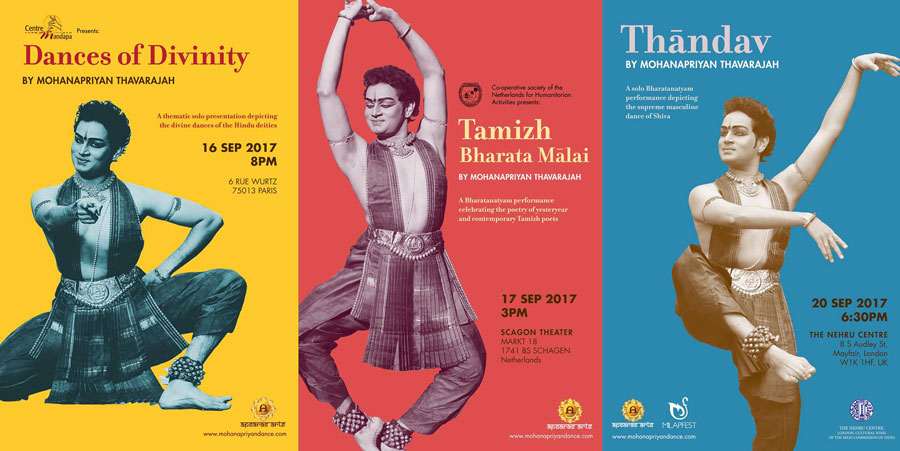
Mohanapriyan Thavarajah from Apsaras Arts will be on an European tour during September 2017 performing a collection of thematic solo Bharatanatyam performances, including “Dances of Divinity”, “Tamizh Bharatha Maalai” and “Tandav”. Mohanapriyan will be conducting a workshop for Milapfest on Saturday 22nd at Liverpool.Please find the following details of the shows and ticket details. Paris Centre Mandapa Saturday 16/09/17 at 8pm For tickets: www.weezevent.com/dances-of-divinity-mohanapriyan-tavarajah Netherlands Scagon Theatre Sunday 17/09/17 at 3pm For tickets: www.scagontheater.nl London Nehru Centre Wednesday 20/09/17 at 6.30pm For tickets: www.nehrucentre.org.uk/events/details/article/shiva-tandava-h3bharatanatyam-h3-h3mohanapriyan-thavarajahh3.html
Navarathri
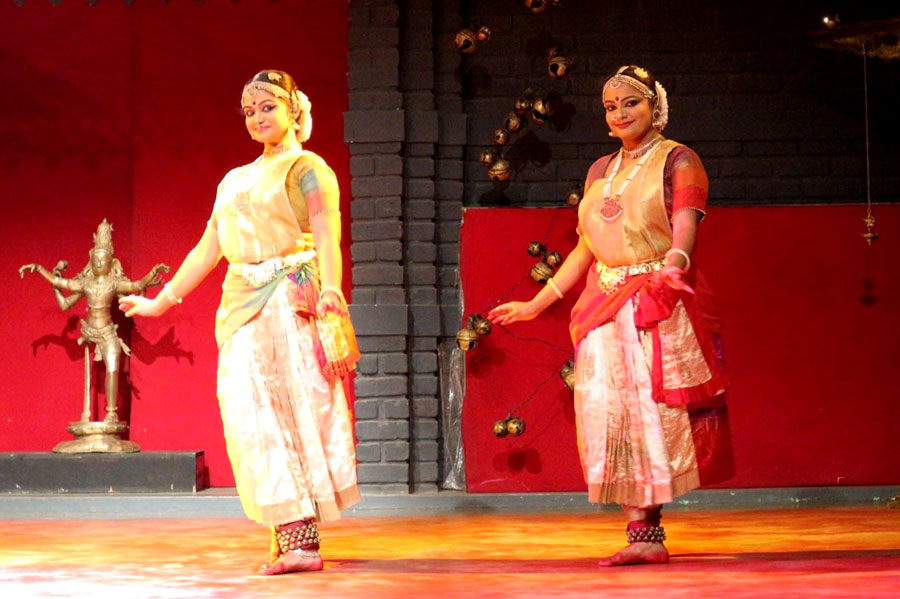
Following the tradition being followed in the past many decades, dancers from the Apsaras Arts Dance Company and dance students from Apsaras Arts Academy will be performing for the annual Navarathri celebrations across Singapore. Please see details below Sri Vadapathira Kaliamman Temple 555 Serangoon Rd, Singapore 218174 on Friday 22nd September, 2017, 8:50 pm Sri Mariamman Temple 244 South Bridge Rd, Singapore 058793 on Sunday 24th September, 2017, 8:50pm Sri Thendayuthapani Temple 15 Tank Rd, Singapore 238065 on Wednesday 27th September 2017, 9:00pm Sri Senpaga Vinayagar Temple 19 Ceylon Rd, Singapore 429613 on Friday 29th September 2017, 7:30pm
Vijayadasami
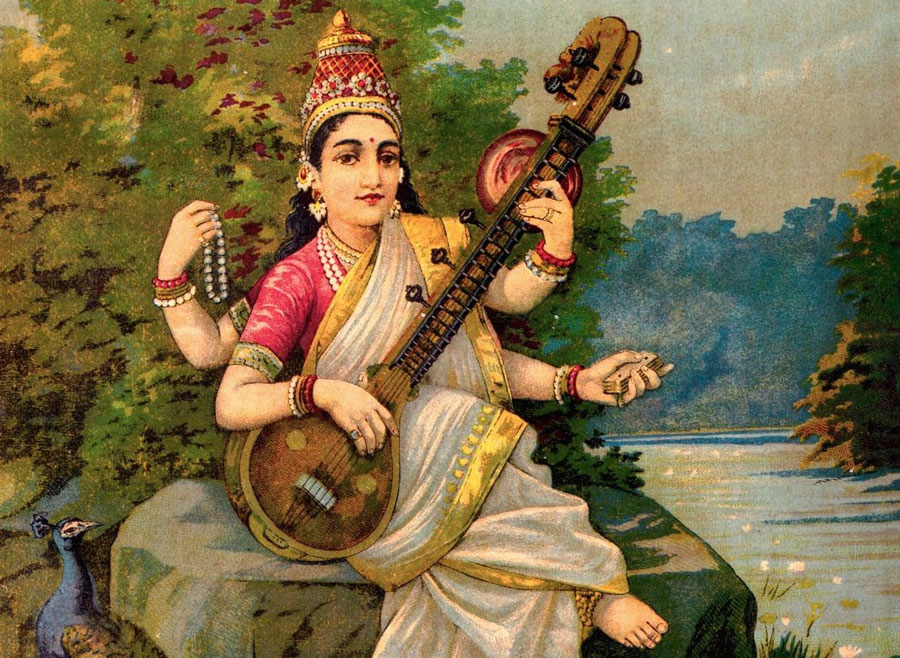
On Vijayadasami day which falls on the tenth day of Navarathri, it is a tradition to pay respects to your Gurus and to partake in the Vidhyarambam observation where very young children and anyone who wants to pick up a new art from are initiated in to the learning. Please find the following details on the Vijayadasami celebrations at Apsaras Arts. Saturday 30th September 2017, at Apsaras Arts studios, Block D #01-24, Goodman Arts Centre, 90 Goodman Road, Singapore 439053 7:30am to 9:00am: Homam and Pooja 10:00am to 12:00pm :Initiation to new classes
Apsaras Arts at UTSAV
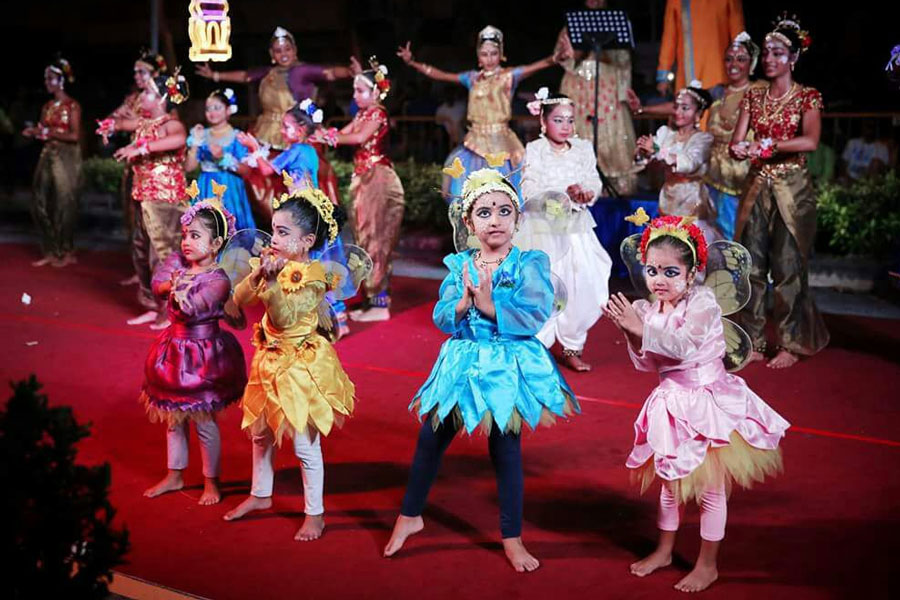
Apsaras Arts Academy students at UTSAV 2017 Street Parade, heralding in the Deepavali festivities with cultural performances by local and international artistes. The performance by Apsaras Arts Academy students was themed as “Apsaras in the Gardens” and featured Kathak and Bharatanatyam genres of Indian classical dance. Dance students as young as 4 years were part of the 45 member strong team from Apsaras Arts Academy.
Literary Marvels of Kambar
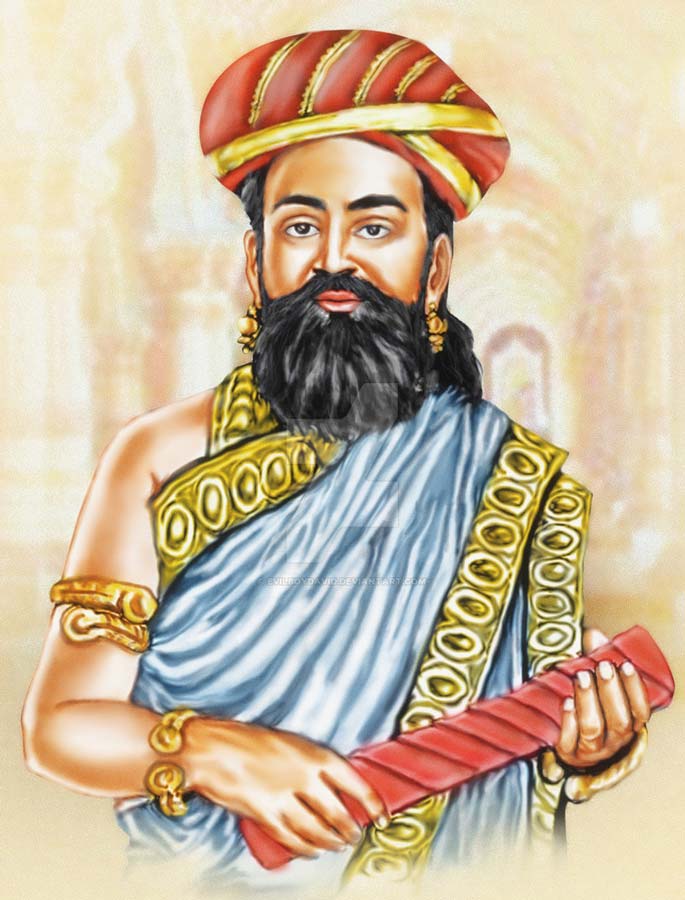
A symposium on the Tamil literary marvels by the poet Kambar by Apsaras Arts in collaboration with Umar Pulavar Tamil Language Centre Kambar was a medieval Tamil poet and the author of the Ramavataram, popularly known as Kambaramayanam, the Tamil version of the Ramayana. The Ramavataram is an epic of about 11,000 stanzas, is not a verbal translation of the Sanskrit epic by the poet Valmiki, but a retelling of the tale in Tamil, rich in literary values. This symposium showcasing on the literary marvels of the poet include talks by two distinguished scholars and dancers from Apsaras Arts will share a dance narrative to Kambar’s words adding a different dimension to experiencing the epic. Date : Saturday, 4th November 2017 Time : 6:00pm to 8:00pm Venue : Umar Pulavar Tamil Language Centre, 2 Beatty Road, 209954 Admission Free. All are Welcome. For more information, please contact Ms Shankari email : apsaras.arts@gmail.comoffice phone : 65735866 Online Quiz for Participants
Hanuman Chalisa Chanting
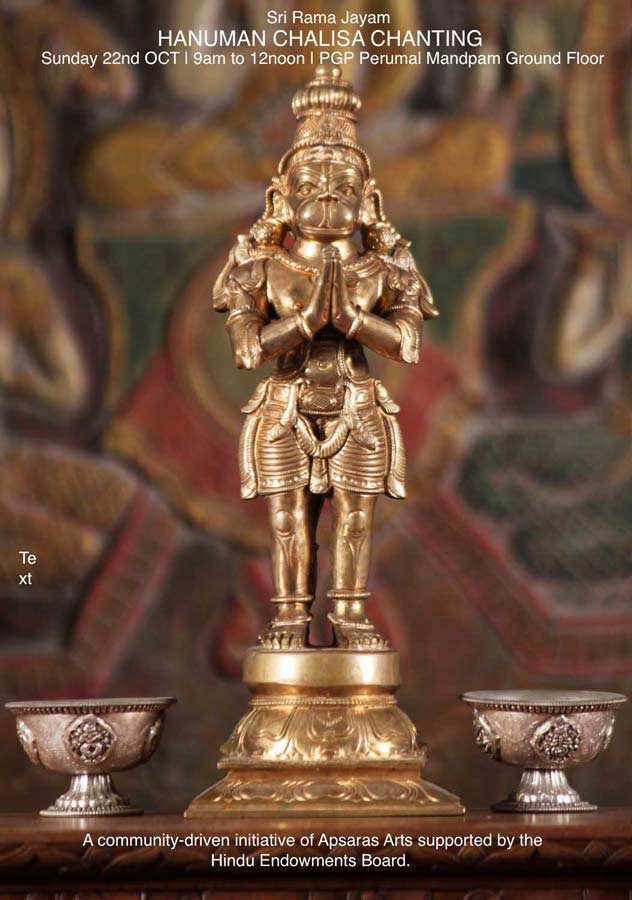
A community engagement event organised by Apsaras Arts supported by the Hindu Endowment Board, Singapore The Hanuman Chalisa, is a Hindu devotional hymn (stotra) addressed to Hanuman. It is traditionally believed to have been authored by 16th-century poet Tulsidas in the Awadhi language, and is his best known text apart from the Ramcharitmanas by the same poet. The word “chālīsā” is derived from “chālīs”, which means the number forty in Hindi, as the Hanuman Chalisa has 40 verses (excluding the couplets at the beginning and at the end). The auspicious form, knowledge, virtues, powers and bravery of Hanuman are described in the first ten Chaupais. Chaupais eleven to twenty describe the acts of Hanuman in his service to Ram, with the eleventh to fifteenth Chaupais describing the role of Hanuman in bringing back Lakshman to consciousness. From the twenty-first Chaupai, Tulsidas describes the need of Hanuman’s Kripa. At the end, Tulsidas hails Hanuman and requests him to reside in his heart and in the heart of Vaishnavs. Date : Sunday, 22nd October 2017 Time : 9:00am to 12:00noon Venue : PGP Mandapam (Ground Floor) 397 Serangoon Road Singapore 218123 Lunch will be served at 12:00 noon Admission Free. All Are Welcome.
Behind the Scenes of Apsaras Arts’ Anjaneyam – Hanuman’s Ramayana
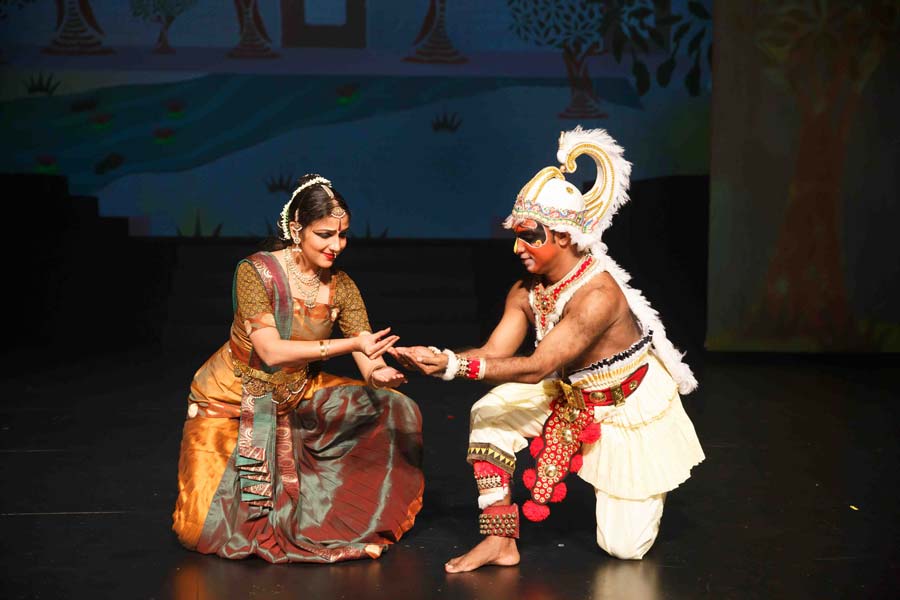
At this dance video talk, the audience will be able to hear more on the concept from its artistic director Aravinth Kumarasamy and catch a sneak preview of Javanese and Indian dance sequences. This talk is presented by Esplanade Theatres on the Bay as part of da:ns festival 2017. Date : Saturday 21st October 2017 Time : 4:00pm to 5:00pm Venue : Library@Esplanade Admission Free
Ravana
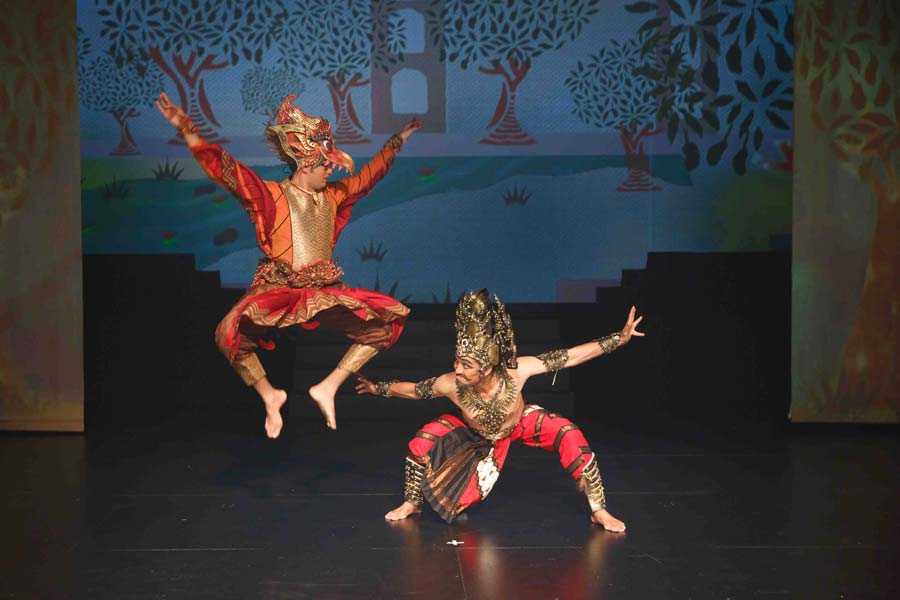
Ravana is the primary antagonist in the ancient Hindu epic Ramayana where he is depicted as a Rakshasa, the Great king of Lanka. Ravana is the son of Vishrava and Kaikesi and grandson of Pulastya. Ravana, a devotee of Shiva, is depicted and described as a great scholar, a capable ruler and a maestro of playing the musical instrument – the veena He is also described as extremely powerful and has ten heads. His paramount ambition was to overpower and dominate the devas. His ten heads represent his knowledge of the six shastras and the four Vedas. In the Ramayana, Ravana kidnaps Rama’s wife Sita to exact vengeance on Rama and his brother Lakshmana for having cut off the ears and nose of his sister Shurpanakha. Ravana’s malevolent spirit was not exhausted with his death at the climax of Ramayana; rather, his legacy of evil was reiterated and revisited mythologically and theologically in many later Hindu texts. In the Bhagavata Purana, for instance, Ravana and his brother, Kumbakarna were said to be reincarnations of Jaya and Vijaya, gatekeepers at Vaikuntha, the abode of Vishnu and were cursed to be born on Earth by the Sanatah Kumara monks after refusing these holy men entry. The all-merciful Vishnu agreed that they should be punished but agreed to mitigate their curse. He asked them whether they would want to undergo seven births as devotees of Vishnu or three births as enemies of the Lord. Since they wanted to get back to Vaikuntha as soon as possible, they agreed to be born in three births as enemies of God. In their second of these births, it is said that they were born as Ravana and Kumbhakarna. Despite his villainous behavior, Ravana is still commonly acknowledged as a great character. He is considered to have possessed several important virtues, the foremost being his knowledge of the sacred books, medicines, and sorcery. Ravana was also a great devotee of Shiva, and is supposed to have composed the dance known as the Shiva Tandava Stotra, according to legend. Further, his skillful leadership is often noted; although Ravana initially took Lanka by force, he was nevertheless an effective ruler, bringing times of great prosperity to the island during his rule. With this in mind, citizens of Khonpura worship their Ravana idol during the Dussera festival, an occasion wherein worshipers everywhere else burn his effigy. He is considered to be the most revered devotee of Shiva. Images of Ravana are seen associated with Shiva at some places and he is also hailed as Ravaneshwara. Mandodari was the queen consort of Ravana, the king of Lanka, according to the Hindu epic Ramayana. The Ramayana describes Mandodari as beautiful, pious, and righteous. She is extolled as one of the Panchakanya (“Five Girls”), the recital of whose names is believed to dispel sin. Mandodari was the daughter of Mayasura, the King of the Asuras (demons), and the apsara (celestial nymphs) Hema. Mandodari bears three sons: Meghanada (Indrajit), Atikaya, and Akshayakumara. According to some Ramayana adaptations, Mandodari is also the mother of Rama’s wife Sita, who is infamously kidnapped by Ravana. Despite her husband’s faults, Mandodari loves him and advises him to follow the path of righteousness. Mandodari repeatedly advises Ravana to return Sita to Rama, but her advice falls on deaf ears. Her love and loyalty to Ravana are praised in the Ramayana.